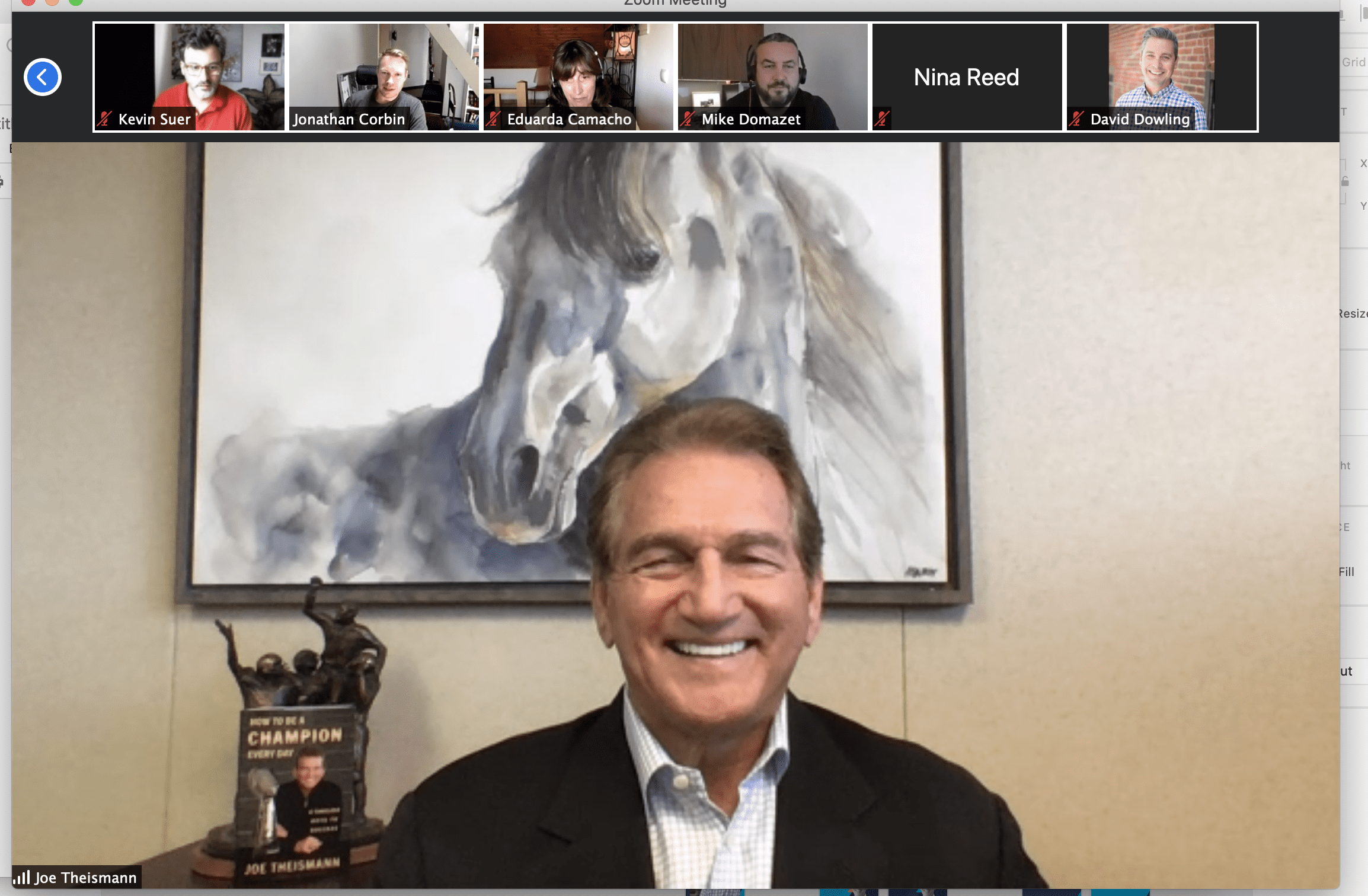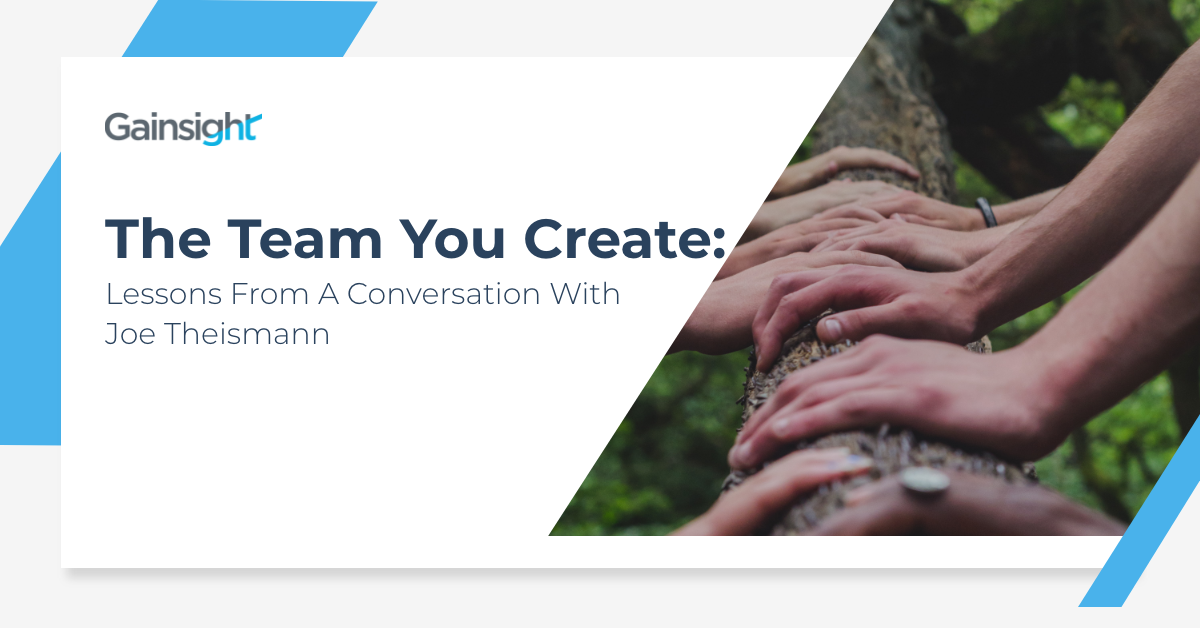
Today, I had the pleasure of listening to a recent client event hosted by one of my favorite athletes, Joe Theismann. Now, I am a west coast girl who loves college basketball, bleeds red and blue, and is true to my beloved Arizona Wildcats. But I am also a Phoenician and always support the Arizona Cardinals, especially the amazing Larry Fitzgerald. A true class act. In my house growing up, the Cowboys were our team, Tom Landry was deeply respected, and Roger Staubach was king. However, I admire Joe Theismann. And how can you not?
Our family was watching that game on November 11, 1985. All of us were athletes and to watch that tragic and career-ending accident was devastating. Joe’s transformation after his injury is an incredible testament to the type of man he is. Joe, no doubt has many talents. He is a restaurant owner, author, and well-known philanthropist. But his career as an inspirational speaker has intrigued me. Joe had many notable “nuggets” of wisdom to share during the event. However, it was his insights into leadership and teams that struck an interior chord and resonated with something I had read before.
As a development and content editor who specializes in customer success, I especially enjoy working with subject matter experts. I like to know how their minds work. I listen not only to the knowledge that they present, but the story they have underneath. Everyone has a journey of vulnerability, passion for their work, and the “why” behind their career path. That is something I found that aligned between Joe Theismann’s insights and The Customer Success Economy, by Nick Mehta and Allison Pickens.
Nick and Allison’s book stressed the importance of picking the right leaders and the right team members to make your customer success organization work for your company and your customers. I was surprised when Joe shared a story of one of the all-time great NFL quarterbacks, Tom Brady, that aligned with this belief. Now, I can already hear some booing and hissing from those who are not fans of Tom or the New England Patriots. I have to admit I am one of them. Love them or hate them; you cannot deny Tom and the Patriot organization’s success.
Tom Brady has spent 20 seasons with the Patriots. There is a small list of long-tenured players that made it past 20 years in the NFL. That is incredible to fathom when the average NFL career is about three and a half years. There is an even shorter list of quarterbacks that last that long. The only one that lasted longer than Tom Brady is George Blanda, who lasted 26 seasons as both a kicker and a quarterback. What I was amazed to learn was this bit of trivia. Tom Brady, at 42 years old, has thrown touchdown passes to 75 different receivers. For all his years of success on the field, he was not with the same team of players each season. Think about that.
In Customer Success, it is not uncommon for there to be turnover in employees. People mature, change companies, move locations, and climb the ladder of success even to the C-suite. But what if you joined a new team every year, and each year you led them to $100 million of revenue? Each year it was essentially a new organization, with different members, metrics, and leaders, but still, you reached your $100 million goal. That would be the Midas touch. While it may seem improbable, it is possible with the right team members and the right leadership.
Leadership and the Team You Create
When you talk about teams, you are talking about employees and leadership. Joe shared that he has found that the best teams are based on a type of chemistry. Each person is fulfilling their role with leaders who are guides. The true measure of that chemistry is based on how much everyone buys into the system. Joe explained it in regards to Tom Brady and the Patriots.
New England Patriots head coach Bill Belichick is a friend of Joe’s. Over the years, Joe has watched Tom and the Patriots (with different members each season) accomplish their goals. Joe tried to understand, with so many variations of teams, how they created a cohesive organization. Finally, Joe talked to Bill in an attempt to understand the process that produced nine Super Bowl appearances while winning six. That’s unheard of.
“When you think of the athletes that have been able to accomplish things like that, especially in our sport,” Joe began, “it’s so unique for people to stay together long enough so that you could create that kind of chemistry.” Joe asked Bill one day, “What is it about your team? What makes it special?” Bill explained that he tries to create an environment where everyone can be successful. For Joe, he couldn’t leave it there. After he and Bill talked, he analyzed it and came up with a formula called E³ or E to the third power. “You have the environment,” Joe explained. “You have the expectation, and then you have the execution.”
The Right Formula
At Gainsight, we have similar formulas that we have developed to explain the chemistry we should have within our organizations. The core of our environment is our team. It is where all companies need to start and invest. As Joe said, “Because the team is the most important thing.”
The team is the most important thing. Everyone masters their own role while being guided by leaders who know what their people are capable of and how to draw out their best. And then, there are those who have the vision to create the plays to make sure the entire org is moving to the ultimate goal.
I thought about this for a while after listening to Joe. It brought to mind some of the advice that Nick and Allison shared in their book. First, when creating a team, you must invest in quality team members. It is a considerable risk not to find the right people who will not just do the job well, but also fit your company’s culture. Developing a team is not always an easy task. They must be diverse with the right combination of IQ (classic intelligence), EQ (emotional intelligence), and grit (perseverance). This formula translates specifically to each role.
For a CSM, IQ would be product knowledge. EQ for a CSM is the combination of persuasive communication and a mindset for planning. And grit equates to playbooks. The “hustle” aspect allows a CSM to learn and execute consistently and achieve outcomes.
Then there are the managers or directors. They are not at your front but to the center. Your quarterbacks. They are adept at situational problem solving or what would be their IQ. There is also an EQ for a leadership role. At Gainsight, we recognize that leaders are often beacons for discussion. Their purpose is to help team members cope with emotions of dealing with situations and customers that are, at times, tenuous. Directors and managers have the grit for achievement using the execution of playbooks and other activities to achieve goals.
The next level is your high-level leaders, your sideline coordinators, or your VPs of CS. They are people who have the IQ to know the long-term planning, the EQ of executive sponsorship, and the grit of accountability.
Your Head Coach—The CCO
When Joe spoke about leadership and coaches, I envisioned the Chief Customer Officer. He said leadership is not knowing everything. “I hate to break the news to people all the time when I’m in a meeting or even now. We don’t know everything.” That’s okay because you have the ability to surround yourself with people who can provide you with those answers. First, don’t be afraid to ask. Second, don’t be afraid to surround yourself with people that know more than you do.
Nick and Allison wrote that a CCO must have an IQ of cross-functional orchestration, an EQ of inspiration, and the grit of mobilizing peers. Everything that Joe explained about a successful football team translates into customer success and the organization you build around it. No one person knows all the answers. We have to be ready to ask questions and be open to the solutions coming from others at all levels. At Gainsight, Nick has an open-door policy, and he encourages the same for all of the VPs and C-level leaders. He wants transparency, honesty, and trust in the company. Nick believes in listening to employees as much as leadership wants employees to listen to them. Because, as Joe said, we must all keep learning, and we are all guides.
At Gainsight, our company works because we create an environment where everyone can be a part of human first empathy and cohesiveness. We attempt to have a diverse, inclusive organization that makes employees happy. And happy employees take better care of customers. Gainsight has realized that our teammates are clients too. We want to encourage relationships between team members, Directors, and VPs, and of course, our CCO where each can be the best form of themselves, bringing purpose, energy, compassion, and a sense of vulnerability.
There was a Theodore Roosevelt quote that Joe shared: “People don’t care how much you know until they know how much you care.” By creating a work environment where the employee is valued as much as the leader, you establish a place where everyone buys into the system. That is the type of team I know Nick Mehta wants to create. As a Gainster, it is one that I am proud to be a part of.

